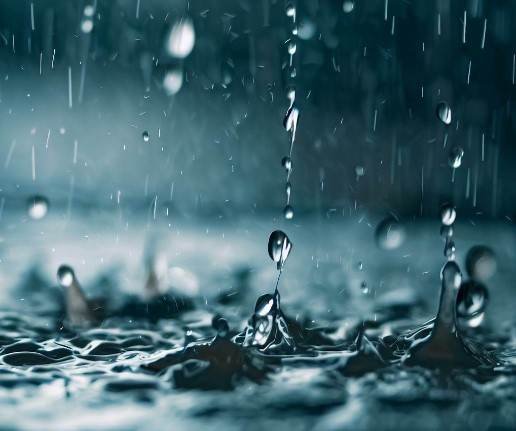Amazing Facts for School Assembly – School assemblies are a wonderful opportunity to engage students and provide them with interesting and educational content. One way to captivate their attention is by sharing amazing facts that spark their curiosity and expand their knowledge.
Amazing Facts for School Assembly
In this article, we will present 50 incredible facts from various fields that will leave your school assembly buzzing with excitement. Let’s dive into these fascinating facts that are sure to inspire and intrigue both students and teachers alike.
Fact 1: The world’s largest ocean
The Pacific Ocean is not only the largest ocean on Earth but also spans a vast area covering more than 63 million square miles. It is home to numerous exotic and diverse marine species, making it a treasure trove of biodiversity.
Also Read - Why Are Oceans Salty but Not Lakes
Fact 2: The tallest mountain
Mount Everest, located in the majestic Himalayas, stands as the tallest mountain in the world. Rising to an impressive height of 29,029 feet (8,848 meters), it presents an awe-inspiring challenge for mountaineers around the globe.
Fact 3: The fastest land animal
When it comes to speed, the cheetah takes the crown as the fastest land animal. With incredible acceleration and agility, it can reach speeds of up to 70 miles per hour (113 km/hr) in just a few seconds.
Fact 4: The longest river
The Amazon River, flowing through South America, holds the title of being the longest river in the world. Its length spans approximately 4,345 miles (6,992 kilometers) and is known for its rich biodiversity and vibrant ecosystem.
Fact 5: The largest desert
Covering a vast area of 3.6 million square miles (9.4 million square kilometers), the Sahara Desert in Africa is the largest desert on Earth. Its sprawling landscape of sand dunes and arid regions creates an otherworldly environment.
Fact 6: The oldest civilization
Ancient Mesopotamia, situated in the fertile lands between the Tigris and Euphrates rivers, is widely recognized as one of the oldest civilizations in human history. It flourished around 4,000 BCE, leaving behind a remarkable legacy of innovation and cultural advancements.
Fact 7: The most spoken language
Mandarin Chinese takes the lead as the most spoken language globally, with over 1 billion native speakers. Its rich history and complex writing system make it a fascinating language to explore.
Fact 8: The longest recorded lifespan
The longest recorded lifespan of any human being is attributed to Jeanne Calment, a French woman who lived to the remarkable age of 122 years and 164 days. Her longevity has become a subject of scientific interest and admiration.
Fact 9: The largest animal
The blue whale holds the title of being the largest animal to have ever existed. Stretching up to 98 feet (30 meters) in length and weighing around 200 tons, it’s truly a majestic creature of the ocean.
Fact 10: The brightest star
Sirius, also known as the “Dog Star,” shines brightly in the night sky as the brightest star visible from Earth. Located in the constellation Canis Major, it adds a touch of celestial brilliance to our cosmic view.
Fact 11: The largest waterfall
Angel Falls in Venezuela claims the title of being the tallest waterfall in the world. With a staggering height of 3,212 feet (979 meters), it cascades down from the tabletop mountains, creating a mesmerizing sight.
Fact 12: The deepest ocean trench
The Mariana Trench in the western Pacific Ocean is home to the deepest point on Earth. Known as the Challenger Deep, it plunges down to a depth of approximately 36,070 feet (10,994 meters), a place of incredible mystery and exploration.
Fact 13: The heaviest land animal
The African elephant reigns as the heaviest land animal, with males weighing up to 12,000 pounds (5,400 kilograms). These gentle giants captivate our imagination and remind us of the awe-inspiring diversity of wildlife.
Fact 14: The hottest place on Earth
Death Valley in California, USA, holds the record for the hottest temperature ever recorded on Earth. In 1913, it reached a scorching temperature of 134 degrees Fahrenheit (56.7 degrees Celsius), making it a land of extreme heat.
Fact 15: The coldest place on Earth
Antarctica stands as the coldest place on Earth, with temperatures dropping as low as minus 128.6 degrees Fahrenheit (minus 89.2 degrees Celsius). It challenges human endurance and provides a unique environment for scientific research.
Fact 16: The most populated country
According to the latest estimates published by the United Nations in the 2023 revision of World Population Prospects, India is the most populated country in the world with 1,428,627,663 people as of July 1, 2023. This means that India has overtaken China, which has a population of 1,425,671,352 people as of the same date.
Fact 17: The smallest country
Vatican City holds the title of being the smallest country in the world, both in terms of land area and population. This tiny sovereign state is the spiritual and administrative center of the Roman Catholic Church.
Fact 18: The largest bird
The ostrich, with its towering height and impressive size, claims the title of being the largest bird on Earth. It’s fascinating to learn about these flightless birds and their adaptations to their environments.
Fact 19: The fastest bird
The peregrine falcon is renowned for its incredible speed and hunting prowess. With diving speeds of up to 240 miles per hour (386 kilometers per hour), it is the fastest bird in the world.
Fact 20: The most venomous snake
The inland taipan, also known as the “fierce snake,” takes the crown as the most venomous snake. Fortunately, it is rarely encountered, as it inhabits remote regions of Australia.
Fact 21: The largest volcano
Mauna Loa in Hawaii holds the title of being the largest volcano on Earth. Its imposing size and volcanic activity make it a subject of scientific study and admiration.
Fact 22: The longest cave system
Mammoth Cave in Kentucky, USA, boasts the honor of being the longest cave system in the world. Its extensive underground network of passages and chambers is a treasure trove for speleologists and explorers.
Fact 23: The biggest flower
The Rafflesia Arnoldii, found in Southeast Asia, claims the title of being the world’s largest flower. Its enormous blooms can reach a diameter of up to 3 feet (0.91 meters).
Fact 24: The most visited city
Bangkok, the vibrant capital of Thailand, ranks as the most visited city in the world. Its bustling streets, rich culture, and delectable cuisine attract millions of tourists annually.
Fact 25: The tallest building
The Burj Khalifa in Dubai, UAE, stands tall as the tallest building globally, soaring to a height of 2,722 feet (830 meters). Its architectural brilliance and breathtaking views captivate visitors from around the world.
Fact 26: The largest stadium
The largest stadium in the world is the Narendra Modi Stadium in Ahmedabad, Gujarat, India. It has a seating capacity of 132,000 people, which is more than any other stadium in the world. It is mainly used for cricket matches, and it hosts the Indian national cricket team.
Fact 27: The longest bridge
Danyang-Kunshan Grand Bridge in China holds the record for being the longest bridge on Earth, spanning approximately 102.4 miles (165 kilometers). Its construction is a marvel of engineering and infrastructure.
Fact 28: The most abundant gas in the atmosphere
Nitrogen takes the crown as the most abundant gas in Earth’s atmosphere, constituting around 78% of the air we breathe. It plays a crucial role in sustaining life on our planet.
Fact 29: The smallest particle
Quarks are the smallest known particles in the universe, considered fundamental building blocks of matter. They combine to form protons and neutrons, essential components of atoms.
Fact 30: The rarest element
Astatine, one of the halogens, holds the title of being the rarest naturally occurring element on Earth. Its scarcity makes it a subject of scientific fascination.
Fact 31: The highest waterfall
Tugela Falls in South Africa ranks as the second-highest waterfall globally, captivating visitors with its stunning beauty. It cascades down the Drakensberg Mountains, providing a picturesque sight.
Fact 32: The Most visited museum
The Louvre in Paris, France, is the most visited museum in the world, housing an extensive collection of art and historical artifacts, including the famous painting “Mona Lisa.”
Fact 33: The longest-written epic
The Mahabharata, an ancient Indian epic, is the longest-known literary work, consisting of around 1.8 million words. It weaves together profound philosophical teachings, heroic tales, and moral dilemmas.
Fact 34: The largest planet
Jupiter, the largest planet in our solar system, boasts an impressive size and stunning appearance. Its iconic red spot and numerous moons make it a captivating subject for astronomers.
Fact 35: The fastest fish
The Sailfish holds the title for being the fastest fish in the ocean, capable of reaching speeds up to 68 miles per hour (110 km/hr). Its sleek and agile body allows it to excel in hunting.
Fact 36: The oldest university
The University of al-Qarawiyyin in Morocco is recognized as one of the oldest continuously operating universities in the world, dating back to the 9th century.
Fact 37: The highest capital city
La Paz, the capital of Bolivia, stands as the highest capital city globally, situated at an altitude of approximately 11,975 feet (3,650 meters) above sea level.
Fact 38: The largest coral reef
The Great Barrier Reef in Australia is the largest coral reef on Earth, stretching over 1,400 miles (2,300 kilometers). It teems with vibrant marine life and is a UNESCO World Heritage site.
Fact 39: The longest railway
The Trans-Siberian Railway in Russia claims the title of being the longest railway in the world, covering an astonishing distance of around 5,772 miles (9,289 kilometers).
Fact 40: The most famous painting
Leonardo da Vinci’s masterpiece “Mona Lisa” is one of the most famous and iconic paintings in the world, drawing countless admirers to the Louvre in Paris.
Fact 41: The largest diamond
The Cullinan Diamond, discovered in South Africa in 1905, is the largest gem-quality diamond ever found. It was cut into multiple stunning diamonds, some of which are part of the British Crown Jewels.
Fact 42: The oldest known tree
Methuselah, a bristlecone pine tree in California, holds the title of being one of the oldest known living trees, estimated to be over 4,800 years old.
Fact 43: The most-watched sporting event
The FIFA World Cup stands as the most-watched sporting event globally, capturing the hearts of billions of football fans every four years.
Fact 44: The most widely read book
The Bible holds the title of being the most widely read and distributed book in the world, with billions of copies in print and translations into numerous languages.
Fact 45: The most valuable brand
Apple ranks as the most valuable brand globally, with its innovative products and loyal customer base contributing to its immense success.
Facebook is the most popular social media platform, connecting billions of people worldwide and revolutionizing the way we communicate and share information.
Fact 47: The largest film industry
Bollywood, India’s vibrant film industry, produces the most films annually, surpassing Hollywood and captivating audiences around the world.
Fact 48: The most-awarded actor
Sir Laurence Olivier holds the record for being the most awarded actor in the history of the Academy Awards, with numerous accolades for his remarkable performances.
Fact 49: The most visited website
Google ranks as the most visited website on the internet, serving as the go-to search engine for users worldwide.
Fact 50: The largest living organism
The honey fungus, scientifically known as Armillaria ostoyae, holds the title of being the largest living organism on Earth. This colossal fungus spans over 2,385 acres (965 hectares) in Oregon’s Malheur National Forest, making it a true natural wonder.
Conclusion – Amazing Facts for School Assembly
The world is full of incredible wonders and amazing facts that never cease to inspire and amaze us. From the depths of the oceans to the vastness of space, these 50 fascinating facts showcase the diversity and beauty of our planet. Incorporating these facts into your school assembly will undoubtedly spark curiosity, encourage learning, and leave a lasting impression on students.













































